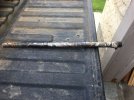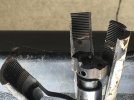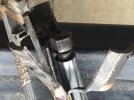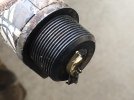



I was thinking that too. But making sure I check my reloading process also.Just throwing some more ideas out there.
Could it be that the rifle had a microscopic fracture, that got overlooked, and every shot continually weakened it to the point that it was actually a safe charge that caused this? Are the threads stripped (or partially stripped) from the barrel where the action screwed on or did the action just explode? Can you post a better picture of the threads and their condition?
What's the rifles history? Is it stock from the factory or has it been re-barreled or worked on?
Rifle is probably 7-8 years old (son's gun)
Rifle has had at least 500 rounds thru it.
Original barrel, never worked on
